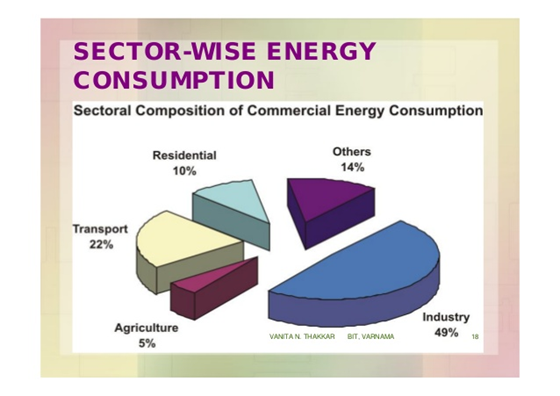

- Access to affordable, stable and sustainable energy supply, is essential for maintaining a high growth trajectory. Energy access also enables the fruits of economic growth to trickle down to the bottom of the pyramid which leads t transforming lives of the disadvantaged sections of society.
Present State of Indian Energy Sector
- India is the sixth largest economy in the world and is poised to become the second largest economy by 2030.
- It is also the third largest consumer of energy in the world, with demand rising by five percent annually.
- With energy demand set to double by 2040, India needs a robust and healthy energy sector.

- Access to Clean and Affordable Energy: Need of the Hour UN Sustainable Development Goal 7 pertaining to Access to Clean and Affordable Energy, has undeniable positive spill-over in the achievement of other SDGs, including those pertaining to gender equality, poverty elimination, clean water and sanitation, and most importantly, environmental sustainability.
- More than one-quarter of our population or about 311 million people, the vast majority of whom live in rural areas, still lack an electricity connection.
- Another key issue is the per unit cost of power, that determines whether it is affordable for households that need it most.
- In 2017, the government launched the Saubhagya scheme targeting universal electrification and till date it has covered more than 99% till rural households, thus ushering a new era of progress.
- Similarly, on the distribution side, a major deterrent has been the poor financial and operational health of sate discoms affecting their performance.
- The Government has announced the UDAY scheme to spark a financial revival of discoms. Since 2014 the Government has focused on creating a favorable policy environment for boosting the renewable energy sector.
- India is looking to achieve the target of 175 GW by 2022.
- Benefits of improved energy: Energy access is essential for commerce and industry- to thrive and create income-generating opportunities.
- Firms with energy access have higher labor productivity. Improved energy access will inject necessary momentum into the Government’s flagship schemes like Make In India, which was launched to boost domestic manufacturing.
- Energy access can also help realize the Government’s goal of augmenting farmer income through better irrigation, mechanized ploughing and harvesting and by ensuring a wider market for their output. Energy also has a key role to play in ensuring universal access to clean water and sanitation.
- The treatment of waste water through energy, and then using energy to transport the water illustrates the critical water-energy nexus.
- Decentralized, clean energy solutions can greatly enhance the efficiency of primary health services delivery to the marginalized, low income sections of the population residing in remote corners of the country.
- As the healthcare ecosystem in India gets increasingly digitized, energy access will accelerate the growth of tech enabled services like telemedicine and mobile health applications, and bring quality healthcare to the doorstep of the common man.
- Energy Access as a tool for Women Empowerment : Our energy economy is also closely linked with a critical development indicator e women development.
- Energy access has the potential to positively influence women’s health, education, finance, and access to information, especially in backward regions.
- A steady growth in renewable energy has opened up a lot of avenues for women entrepreneurship especially in rural India.
- Off-grid solutions and decentralized RE systems have enabled women to get trained in installing, operating and maintaining these units, providing them with much needed income, which translates into enhanced self-esteem and social standing.
- Energy access can catalyse a more gender equal society, where women are well-integrated into the economic mainstream, thus resulting in holistic and inclusive.
- Today, solar energy powered schools in rural India have given young girls the opportunity to pursue quality modern education (ICT enabled), turn digitally literate and brighten their career prospects.
- Further, children can now return home in the safety of solar powered street lights and continue to study at their homes which are now electrified.
- Sustainable energy available in the right amount, at the right place, and affordable for the entire society, can yield major socio-economic benefits, as enlisted above.
Related Articles

